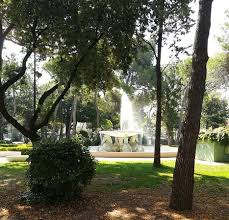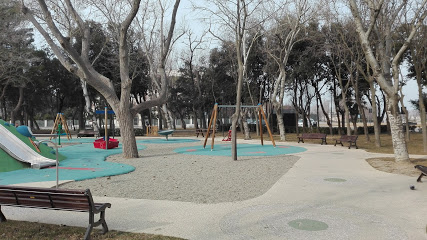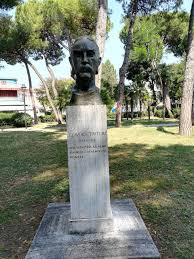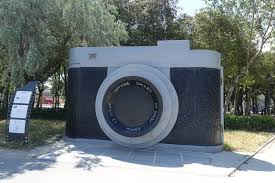The garden was built in the post-war period by transforming Kursaal's magnificent shower gardens (in the German "treatment room"). The neoclassical building was built between 1870 and 1873 by the design of the municipal engineer Gaetano Urbani, in the same area of the building that was built in 1843 at the end of "stradone dei bagni" (today viale Principe Amedeo). The large factory, with two hotel buildings (built a few years ago), sophisticated tourist facilities and wellness facilities in the vicinity, was run by health expert Paulo Mantegaza and for several years hosted a casino, entertainment and dance. , To become the prestige of the high society in Rimini par excellence (festivals were surrounded by a legend halo). The atmosphere has been reinterpreted in some Fellini films, which tend to unite Kursaal and the Grand Hotel in his memory. The latter, commissioned by South American architect Paolo Somzi of the Milan Hotel, Restaurant and Restaurants, was built in the immediate vicinity of Kursaal, and was opened in 1908. In 1930, the area facing the square in front of Kursaal was decorated with flower beds. While the road towards the city, between the buildings of Rome and Milan and the Four Horses Fountain, became a salon of high society, was the scene of many events and was expanded and enriched with new plants for ornamental purposes.
x
T
R
F
I
H
I
We have 16614 Parks Now ... The First and largest platform for green public parks
Park Federico Fellini
Park Federico Fellini
via Saint Maur de Fosses, 47921 Rimini RN, Italy
Every Day : 24 Hours .
About Park
-
Preview
Become the prestige of the high society in Rimini par excellenceImportant Information
-
Every Day
24 Hours -
Foundation Date
1/1/1873
-
Every Day
-
Intertainment Elements
Sports
Sitting places
Entertainment
Trips
Kids area
-
Main Elements
- Cleanliness
- Green areas
- Open spaces
- Open paths for walking
- Fountains
- Attractions







